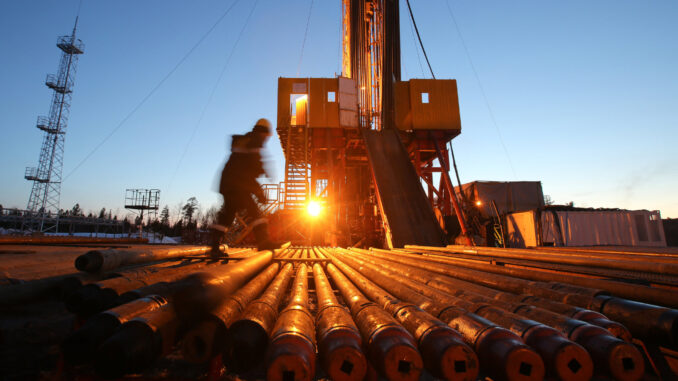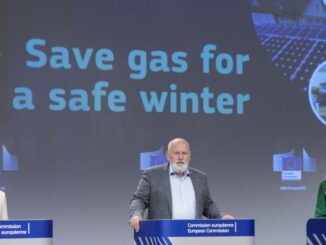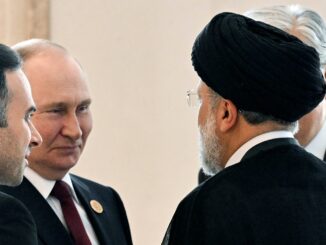
For oil traders, the biggest question in the market is how fast OPEC and its allies will revive production later this year. Next week they may get some clues.
When it meets on Tuesday, delegates said the alliance led by Saudi Arabia and Russia looks set to rubber-stamp output increases scheduled for the next two months.
But more importantly, Riyadh and Moscow may offer insights on the next stage of their strategy: bringing back the millions of barrels a day that remain offline after being shuttered when the coronavirus struck.
In theory, there’s a yawning supply gap for the Organization of Petroleum Exporting Countries and its partners to fill in the second half of the year as economies open up and fuel demand soars. Yet the group will need to weigh that against the risk from renewed virus outbreaks in India and elsewhere, and the prospect of extra supply from fellow member Iran.
The pace of revival they ultimately choose will be critical for crude markets and the fortunes of producers around the world. It was OPEC’s intervention that ended last year’s oil-price crash and fostered their recovery to nearly $70 a barrel today.
“We’re still expecting OPEC+ to push through with the announced measures until the end of July,” said Bill Farren-Price, a director at research firm Enverus and veteran observer of the cartel. Beyond that “it remains a delicate balancing act. OPEC’s sense of caution is warranted.”
Roaring Back
With fuel consumption roaring back in the U.S. and China, and on the mend in Europe, OPEC+ delegates say they’re confident they can add about 840,000 barrels a day in July. That would complete the last of three monthly increments that amount to just over 2 million barrels a day of extra production. A Bloomberg survey shows the market has widely priced in that move.
Saudi Arabia recognizes that there’s a supply deficit right now that needs to be filled, according to people familiar with the country’s position. Russian Deputy Prime Minister Alexander Novak estimates that demand currently exceeds production by 1 million barrels a day, the Interfax news agency reported.
While OPEC+ has repeatedly surprised observers with its policy choices this year — increasing output when restraint was anticipated, and vice versa — a straightforward decision on Tuesday would shift the focus to the group’s next move.
Once the current ramp-up is completed in July, OPEC+ nations will still have lots of spare production capacity, taken offline when demand crashed last year. On paper, this amounts to almost 6 million barrels a day, or roughly 6% of global supplies.
Under a road map drawn up a year ago, OPEC+ is formally committed to withholding that output until April 2022. Yet that agreement was hastily struck at the height of last year’s tumult, and as customers start asking for extra barrels it will be tested.
For guidance on whether the cartel will allow some flexibility in its current plan, traders will look out for comments next week from Saudi Energy Minister Prince Abdulaziz bin Salman and his Russian counterpart. No decision on changes to policy beyond July is expected at this gathering, but any hints the ministers give will be closely scrutinized.
Keeping Pace
The International Energy Agency, which advises major economies, believes that OPEC+ will need to open the taps in the second half of the year as the vaccine roll-out propels a vigorous recovery in fuel consumption.
Surplus inventories amassed during the pandemic have effectively been used up, the Paris-based IEA estimates. Without additional supplies from the 23-nation group, stockpiles stand to deplete sharply in the second half, at a rate of 1.6 million barrels a day.
“Supplies won’t rise fast enough to keep pace with the expected demand recovery,” the agency said in a report earlier this month.
Some major oil-trading houses privately estimate the supply shortfall will be significantly larger and drive up prices. Goldman Sachs Group Inc. believes crude is heading for $80 a barrel. If markets over tighten, a flare-up in prices could jeopardize the global economic recovery.
“The second half is looking pretty tight,” said Bob McNally, president of consultant Rapidan Energy Group and a former White House official, said in a Bloomberg television interview.
Moving Cautiously
Riyadh is conscious of the deficit projected in many forecasts, according to people familiar with its thinking. But Prince Abdulaziz repeatedly extols the importance of moving cautiously, and delegates say the uncertainty posed by the virus and Iran needs to be taken into account.
Tehran is engaged in nuclear negotiations with Washington that could lift U.S. sanctions on its crude exports. With an agreement, analysts expect the Islamic Republic could boost exports by 1.5 million barrels a day before the end of the year, limiting the need for extra barrels from other OPEC+ nations.
To safeguard against this, the Saudis will probably ask fellow members to ratify a pause until there’s more clarity on Iran, according to consultant Energy Aspects Ltd. Pressing for too long a wait, however, could aggravate old fault lines in the leadership of the coalition.
Riyadh and Moscow have often diverged on how quickly to bolster output, with the kingdom typically advocating restraint and Russia more impatient to expand sales volumes. The United Arab Emirates, another key player, has also shown eagerness to resume exports.
Whether Tehran’s comeback becomes a challenge for the group will depend on the strength of the demand recovery, according to Helima Croft, chief commodities strategist at RBC Capital Markets. As long as consumption remains robust, there’s unlikely to be much discord.
“However, if the market outlook darkens, then we would expect a much more contentious conversation,” Croft said.



